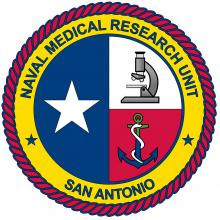Joint operational evaluation of field tourniquets (JOEFT), Phase III
Analyses of casualties early in the wars in Iraq and Afghanistan revealed extremity hemorrhage to be a leading cause of potentially survivable death on the battlefield.
Casualties from the Middle East conflicts over recent decades have highlighted the severity and prevalence of hemorrhage-related injuries. Extremity tourniquets are used in Role I and Role II medicine to control life-threatening hemorrhage, and tourniquets are found in the Individual First Aid Kit (IFAK), Medical Care Bag, Ground and Air Medical Equipment Sets (MES), and other MES kits. With several tourniquet designs available, and new designs continuing to emerge, it is critical evaluate these life-saving devices to ensure military personnel are equipped with the most effective tourniquet designs.
Conventional test platforms, which include animal, mannequin, and human models are each limited in their ability provide repeatable, clinically, and operationally relevant tourniquet performance data; however, the recent development of the SynDaver™ Synthetic Human (SSH) Cadaver has opened the door for tourniquet testing with a level of complexity and fidelity not previously attainable with other trauma mannequin systems.
The engineering team in the Expeditionary and Trauma Medicine Department at Naval Medical Research Unit San Antonio (NAMRU-SA) has taken a leading role in conducting evaluations of extremity tourniquets in simulated field conditions during mannequin and human subject testing to provide valuable performance data that will differentiate the effectiveness of different tourniquet designs and identify those best suited for the operational setting.
The objective of this ongoing study is to evaluate seven extremity tourniquets (designed to control arterial hemorrhage caused by traumatic limb injury) during extended application periods and during simulated patient transfers, using the SSH with a simulated lower-extremity arterial hemorrhage.
In this evaluation of extremity tourniquets on a state-of-the-art human replica cadaver model, quantitative data, including application times, blood loss, and pressure distributions were measured and compared across tourniquet designs. Each of the seven tourniquet designs successfully achieved occlusion during each of the tourniquet applications; however differences were observed during the extended monitoring period and simulated patient transfer.
In this evaluation of extremity tourniquets on a state-of-the-art human replica cadaver model, quantitative data, including application times, blood loss, and pressure distributions were measured and compared across tourniquet designs. The outcomes of the assessment will aid the warfighter and ensure the fielding of only the most effective and operationally sound tourniquet system.



